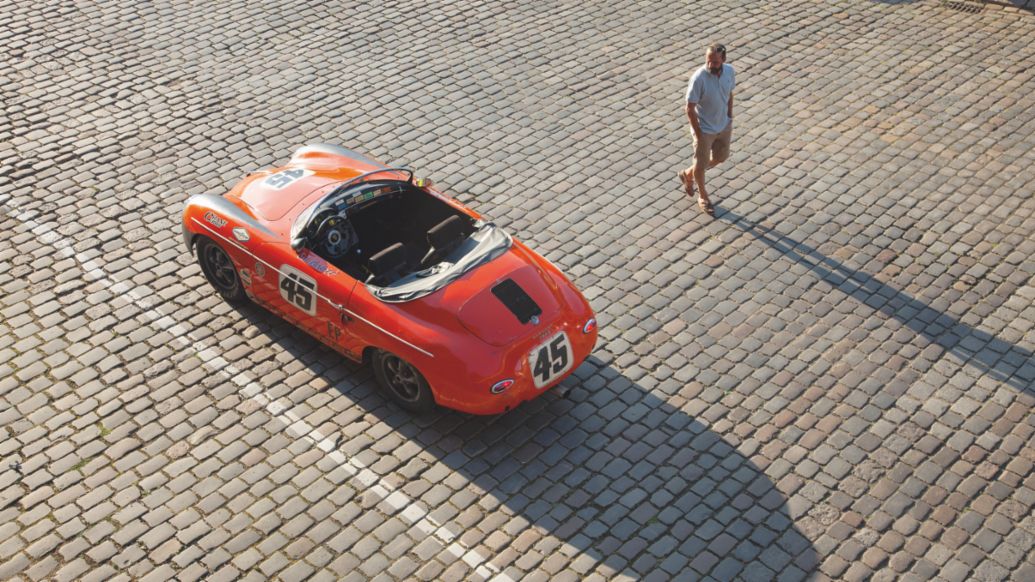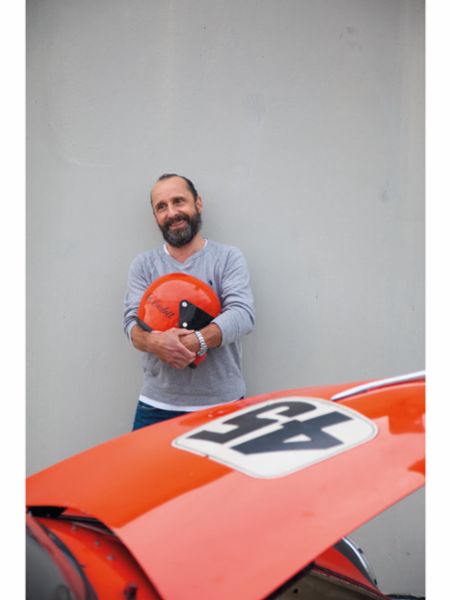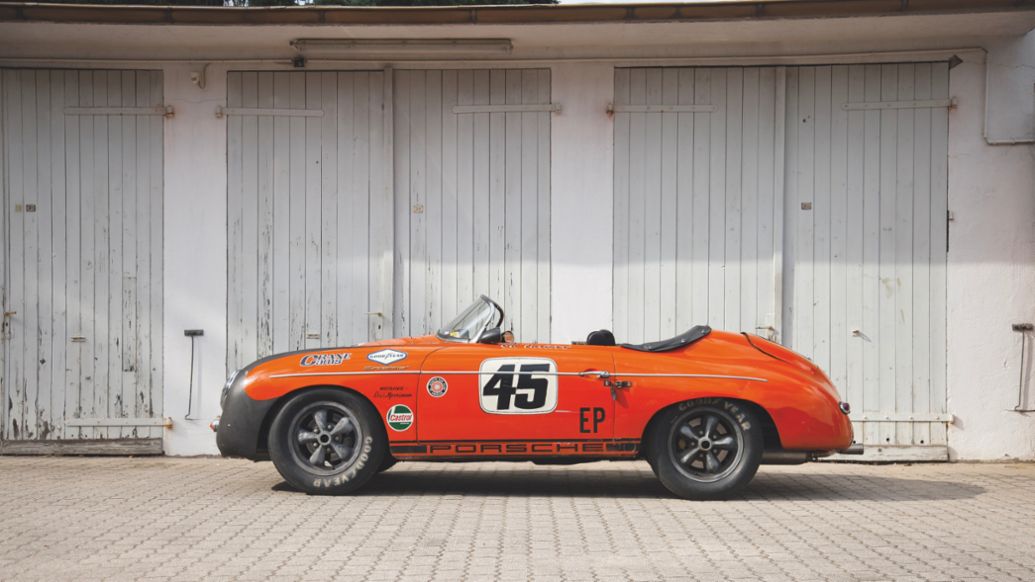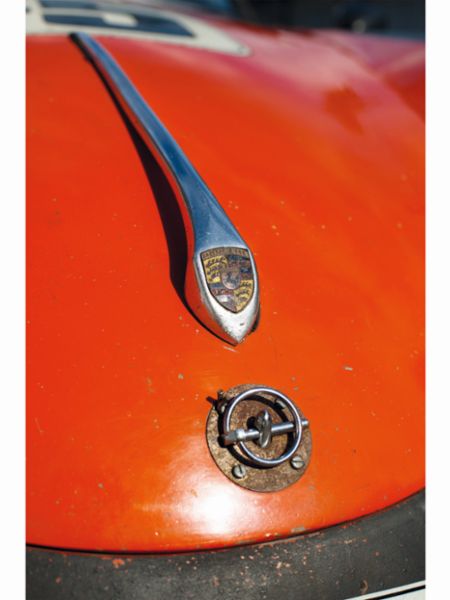Mercedes-Benz compact model Saloons of the 201 model series (production period 1982 to 1993). From left to right: 190, 190 E, 190 D and 190 E 2.3-16. (Photo signature in the Mercedes-Benz Classic archives: 83F183)The C-Class is still one of the highest-volume model series made by Mercedes-Benz.
Since 2016, China has been the largest sales market for the saloon, followed by the USA, Germany and the United Kingdom, where the estate also plays a key role. There are C-Class customers in more than 100 markets around the globe. Its uninterrupted history began in the 1980s with the launch of the Mercedes-Benz 190 of the W 201 model series. Its premiere contributed to the significantly younger and fresher perception of the brand.
Mercedes-Benz proceeded to make the compact model class ever more diverse: the W 201 model series was followed in 1993 by the 202 model series (saloon 1993 to 2000, estate 1996 to 2001). It was called the C-Class for the first time and introduced the estate. The sports coupé was introduced in the 203 model series (saloon 2000 to 2007, estate 2001 to 2007, sports coupé 2000 to 2011 – from 2008 as CLC) and was replaced by the coupé in the 204 model series (saloon and estate 2007 to 2014, coupé 2011 to 2015). In the 205 model series (saloon, long-wheelbase saloon and estate since 2014, coupé since 2015 and cabriolet since 2016), the cabriolet followed as the fourth body variant. The C-Class can boast a number of close relatives: SLK (from 1996) and SLC (until 2020), GLC (from 2008, initially labelled the GLK), GLC Coupé (since 2016) and the all-electric EQC (since 2019). Well over ten million cars of the saloon and estate versions alone have been delivered to customers all over the world since the debut of the 190. The new C-Class 206 model series will be launched in spring 2021.
Debut of the compact model class: The W 201 model series (1982 to 1993)
When it was launched in November 1982, the fresh and agile design, clear wedge shape and fine lines of the Mercedes-Benz 190 caused heads to turn. Internally, the saloon was referred to as a compact model”. The “Baby Benz” was what customers in the USA initially called the car. The lines of the Mercedes-Benz upper medium-size category and the luxury and premium classes with their powerful identifying character served as a reference for this development. Compared to these, however, the W 201 model series was more compact, lighter and more economical. Its technical highlights included the specially developed chassis with its multi-link independent rear suspension. This design largely compensated for lateral and longitudinal forces in all driving conditions. As the debut of the model series, Mercedes-Benz presented the 190 and 190 E models in 1982. These were followed in 1983 by the 190 D with a quiet diesel engine and in 1984 by the sporty 190 E 2.3-16 with four-valve technology. Mercedes-Benz continued development of the model series. A highlight of the 1988 facelift was the 190 E 2.5-16 (143 kW/195 hp), which also served as a successful basis for DTM racing cars. In 1992, special models designed to appeal to younger buyers underlined how successful the model series had been in attracting new target groups to the brand. After a final facelift in 1991, production of the W 201 ended in August 1993, by which time a total of 1,879,630 vehicles of the model series had been built.
The first C-Class: Model series 202 (saloon 1993 to 2000, estate 1996 to 2001)
The 202 model series premiered in May 1993. It bore the name C-Class for the first time – in line with the naming convention of the S-Class, which had been applied since 1972. The letter “C” was followed by a three-digit number referring to the engine capacity. With similar exterior dimensions, the C-Class offered more space and comfort than the W 201 model series. The estate (S 202) appeared in 1996 as a sporty, compact beast of burden. Various design and equipment lines (CLASSIC, ESPRIT, ELEGANCE and SPORT) underlined the individual character, and this was embellished optionally with an AMG styling package. 1995 saw the launch of the supercharged C 230 Kompressor (142 kW/193 hp): for the first time in more than 50 years Mercedes-Benz fitted a passenger car with a Roots blower. The debut of the C 220 CDI (92 kW/125 hp), the first Mercedes-Benz passenger car with a direct-injection diesel engine based on the common rail principle, was a sensation when it launched in 1997. The top-of-the-range model was the C 36 AMG (206 kW/280 hp) when it became available in September 1993. In 1997, the C 43 AMG (225 kW/306 hp) followed as the first C-Class with a V8 engine. The C 55 AMG (255 kW/347 hp) took over the top spot in the following year. From 1992 to 2001, a total of 1,626,383 saloons (W 202) and 243,871 estates (S 202) of the 202 model series were built.
Twin headlamps for the C-Class: The 203 model series (saloon 2000 to 2007, estate 2001 to 2007, sports coupé 2000 to 2011 – from 2008 as CLC)
In March 2000 Mercedes-Benz presented the 203 model series. For the first time, there were three body versions of the compact premium car: the saloon (W 203) was joined by the estate (S 203, 2001) and, for the first time, the sports coupé with a central star in the radiator grille (CL 203, 2000). The twin-headlamp appearance of the front was particularly striking, reflecting dynamism coupled with elegance. Customers could choose between the CLASSIC, ELEGANCE and AVANTGARDE design & equipment lines. As a technology leader, the 203 model series introduced many innovations to the market segment, e.g. window airbags, multifunction steering wheels and a central display. Many assistance systems to promote active safety were included as standard features. Other new developments were the three-link front axle and the easily exchangeable front module incorporating crumple zones made of high-strength steel. The drag coefficient of 0.26 was a pioneering achievement. From spring 2001, the top-of-the-range model was the C 32 AMG (260 kW/354 hp) with a supercharged V6 engine. 2004 saw the launch of the facelifted 203 model series, with the C 55 AMG (270 kW/367 hp), featuring the first eight-cylinder engine in the model series. In 2005, the first Mercedes-Benz V6 engine with quadruple camshaft phasing followed in three performance variants. From 2000 to 2007, Mercedes-Benz produced a total of 1,529,921 saloons (W 203) and 373,873 estates (S 203) of the 203 model series and, by 2008, some 310,709 sports coupés (CL 203) as well. The two-door model was particularly successful with young target groups and customers new to Mercedes-Benz. After a comprehensive facelift , it continued to sell as the CLC-Class until 2010.
Outstanding faces of the C-Class: The 204 model series (saloon and estate 2007 to 2014, coupé 2011 to 2015)
The C-Class 204 model series premiered in January 2007. The saloon (W 204) was followed by the estate (S 204) in the autumn of 2007. The coupé (C 204) appeared in 2011. Compared to its predecessor, the 204 model series had grown in all its dimensions, which further improved spaciousness and comfort. The design, with its taut lines, clear sweep of the front and large, unfussy surfaces exuded technical self-assuredness. For the first time, Mercedes-Benz offered a choice of two different vehicle faces: the AVANTGARDE equipment line with a Mercedes star centrally positioned in the radiator grille was more sports orientated, while ELEGANCE and CLASSIC boasted the classic Mercedes radiator grille with the star on the bonnet. The latter models stood more for comfort and elegance. The AMG Sports package emphasised the sporty appearance. From 2007, the C 63 AMG (336 kW/457 hp) with a V8 engine was the top-of-the-range model. 2008 saw the launch of the C 350 CGI BlueEFFICIENCY with the world’s first petrol engine with spray-guided direct injection. In March 2011, the C-Class Coupé (C 204) was presented, based on the saloon platform. A highlight was the high-performance C 63 AMG Black Series (380 kW/517 hp) presented in mid-2011, which was only available as a coupé. For the saloon and estate models, the C 63 AMG Edition 507 (372 kW/507 hp) was the most powerful C-Class option from 2013. A total of 2,417,117 vehicles of the 204 model series were produced at the Mercedes-Benz plants in Sindelfingen, Bremen, East London (South Africa) and Beijing (China) by the end of 2013. These included 1,836,349 saloons, 429,939 estates and 150,829 coupés.
Wide range of variants in the C-Class: The 205 model series (saloon, long-wheelbase saloon and estate since 2014, coupé since 2015 und cabriolet since 2016)
In January 2014, the Mercedes-Benz C-Class of the 205 model series made its debut, initially as a saloon. The other body variants appeared in quick succession: the estate (S 205, May 2014), a long-wheelbase version of the saloon for China (V 205, August 2014), the coupé (C 205, August 2015) and, for the first time in the direct tradition of the C-Class, the cabriolet (A 205, February 2016). The extensive range of engines with outputs from 85 kW (116 hp) to 375 kW(510 hp) in the top-of-the-range model C 63 S) also included modern hybrid and plug-in hybrid units. Ultra-high-strength steels and extruded aluminium profiles made the saloon’s body structure 50 kilograms lighter than a pure steel construction. The outstanding overall rigidity contributed to the excellent handling with optimum freedom from noise and vibration. The AIRMATIC air suspension was available for the first time, a unique feature in this vehicle class. The Cd value of 0.24 in the lowest-price BlueEFFICIENCY version was a new best value in this vehicle class. In terms of safety, the 205 model series boasted a range of assistance systems. In addition to the familiar airbags, the model series was equipped with pelvis airbags, deployed sideways from the doors, as well as a newly developed window airbag, side airbags for the outer rear passengers and a knee airbag for the driver. The 2018 facelift provided, amongst other things, optional MULTIBEAM LED lights with ULTRA RANGE Highbeam and the Intelligent Light System. In the interior, a fully digital instrument display was now available, amongst other features. The new four-cylinder engines M 264 and OM 654 formed the basis of a modular engine system and enabled a range of drive variants to be offered.























